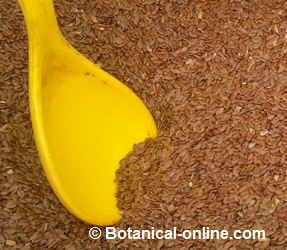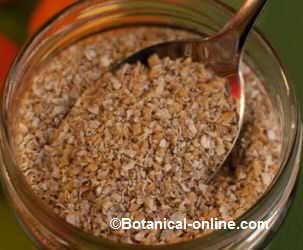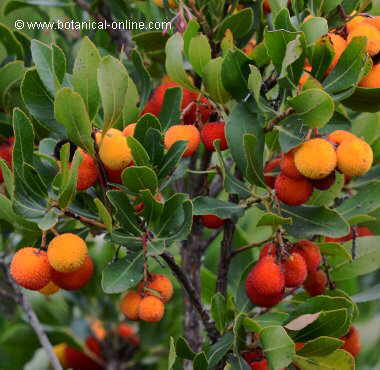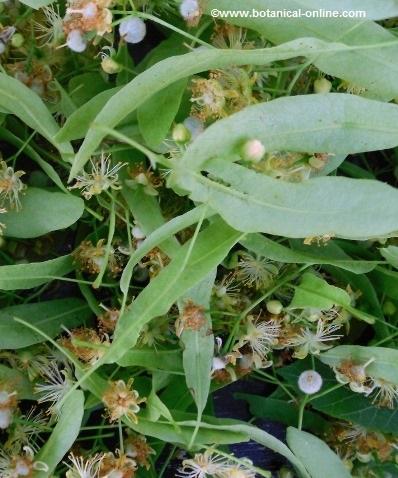Contents
Toxicity of Linum usitatissimum
Toxicity of flaxseeds

Improper and too frequent ingestion of flax products could cause a possible poisoning. Flax contains linamarin, a glycoside that, once ingested, produces cyanogenic glycosides.
Flax is not the only plant that has linamarin. This is in greater proportion in needle bush (Acacia farnessiana) and appears in smaller proportion in other plants such as cassava (Manihot esculenta) and Lima bean (Phaseolus lunatus)
Some studies relate Konzo disease, a kind of paralysis that occurs in rural parts of Central Africa and East Africa, with the excessive ingestion of linamarin from cassava diet, not enough released of this poison. Others believe that this glucoside could be responsible for the emergence or worsening of many cases of diabetes in this area.
The truth is that, to avoid the toxicity of the plants that contain this principle, they are subjected to a detoxification process that neutralizes this component. In the case of flax heat is used.
Precautions and contraindications to the use of flax as a therapeutic remedy
Many more researchers, however, consider that the amount of freed glycosides is not enough to be toxic if used in adequate amounts. However, we should take into account a number of precautions:
– To prevent the transformation of linamarin a dangerous toxin, it is advisable to eat the seeds whole. Infusions can be performed, provided that they are made in cold, since, in this way, it prevents linamarase enzyme to act. (This gets optimal conditions between 40 -50 ° C) If boiling, should be made at least for 10 minutes.
– Used externally, flax meal can cause skin reactions if it is too old and has become stale, hence it is advisable to use quickly after grinding the grain. Under the same conditions the oil can also be irritating to the skin. You are advised to keep the flour or oil in the refrigerator in a dark, airtight container.
– These preparations should not be ingested in obstructions of the esophagus, intestine or pylorus.
– These preparations should not be given to people with thyroid problems because they can promote the development of goiter.
– The ingestion of this nutrient can impair the absorption of drugs, including insulin for diabetics. Flax remedies should not be given to people who are taking medications without the consent of the doctor or specialist.
– Flaxseed oil, with properties similar to those seeds, must be bought in health food stores or pharmacies, using one that has been produced through appropriate procedures to inhibit enzymes that cause the release of hydrocyanic acid. We should read carefully the instructions for use.
– Linseed flour, used externally, can produce reactions to the skin if it is too old and it has become rancid, so we should use it quickly after grinding the seeds. Under the same conditions flax oil can also be irritating to the kin.
Using flax to feed cattle
Using linseed cakes to feed cattle can lead to animal poisoning when this material has not been subjected to heat treatments that destroy the enzyme or when linseed has been extracted using suitable solvents industrially.
Whole seeds can not be digested by animals. Therefore, they must be previously softened in boiling water or be crushed. They are very suitable for pigs and ruminants. However, an excess of such food in pigs produces meat with little consistency.
According to FAO, cakes flax seeds, which come from squeezing the flax meal to get the oil, are also suitable for cattle, but they should not be given too frequently, so as not to have a laxative effect. Used in excess, they also produce too mushy a fat and stale milk.
The component proportions in fodder for pigs and cows should be controlled and it should never be given to hens or other poultry, for which these cakes are always toxic.
Symptoms of poisoning with flax
the main symptoms are:
– Asphyxia
– bad breath
– vomiting,
– sickness
– acceleration of the heart rate
– cardiorespiratory breakdown and death
* Related information:
![]() More information on plants
More information on plants








